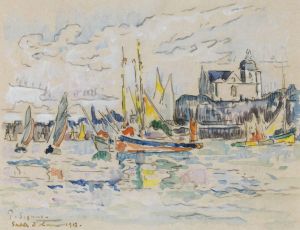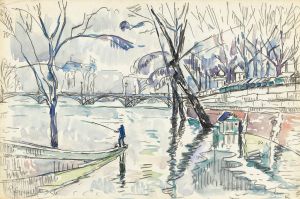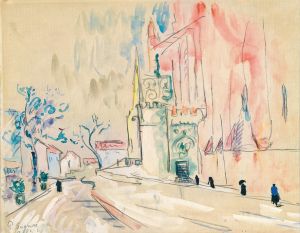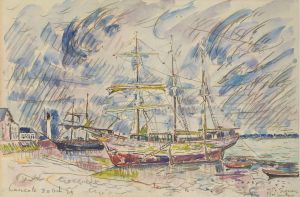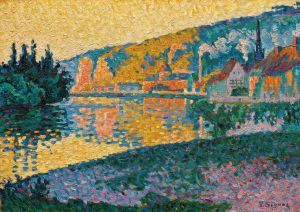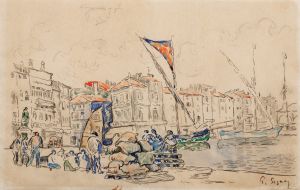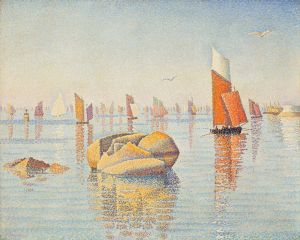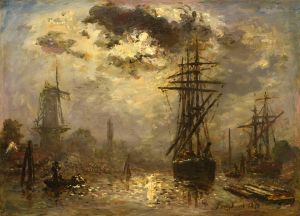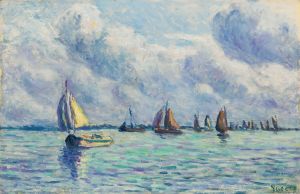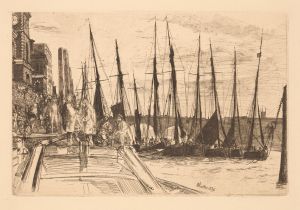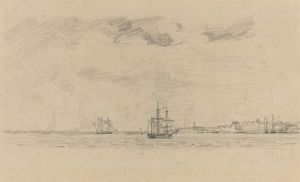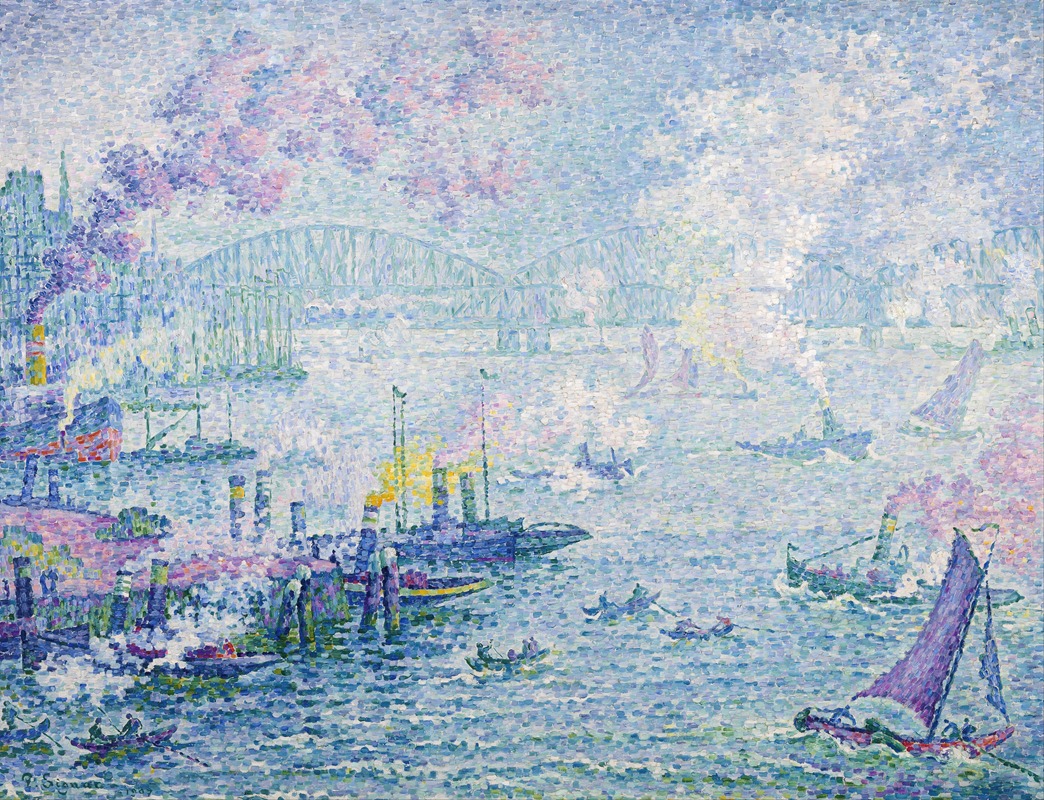
The Port of Rotterdam
A hand-painted replica of Paul Signac’s masterpiece The Port of Rotterdam, meticulously crafted by professional artists to capture the true essence of the original. Each piece is created with museum-quality canvas and rare mineral pigments, carefully painted by experienced artists with delicate brushstrokes and rich, layered colors to perfectly recreate the texture of the original artwork. Unlike machine-printed reproductions, this hand-painted version brings the painting to life, infused with the artist’s emotions and skill in every stroke. Whether for personal collection or home decoration, it instantly elevates the artistic atmosphere of any space.
"The Port of Rotterdam" is a painting by the French artist Paul Signac, created in 1907. Signac was a prominent figure in the Neo-Impressionist movement, which is characterized by the use of pointillism, a technique involving the application of small, distinct dots of color to form an image. This method was developed by Georges Seurat, with whom Signac worked closely.
Paul Signac was born in Paris in 1863 and initially studied architecture before turning to painting. He was greatly influenced by the works of Claude Monet and the Impressionists, but he soon developed his own style, which became known as Neo-Impressionism. Signac's approach to painting was scientific and methodical, focusing on the optical effects of color and light.
"The Port of Rotterdam" exemplifies Signac's mature style, showcasing his mastery of pointillism. The painting depicts the bustling port of Rotterdam, one of the largest and busiest ports in Europe. Signac was known for his love of maritime subjects, and he often traveled to various ports and coastal towns to capture their unique atmospheres.
In "The Port of Rotterdam," Signac uses a vibrant palette to bring the scene to life. The painting features a variety of ships, cranes, and industrial buildings, all rendered in meticulous detail through the use of small, precise brushstrokes. The water in the harbor reflects the colors of the sky and the surrounding structures, creating a shimmering effect that adds to the overall dynamism of the composition.
Signac's use of color in this painting is particularly noteworthy. He employs a range of hues to create a sense of depth and movement, with complementary colors placed next to each other to enhance their visual impact. This technique, known as divisionism, was a hallmark of the Neo-Impressionist style and is evident throughout Signac's body of work.
"The Port of Rotterdam" is not only a testament to Signac's technical skill but also to his ability to capture the essence of a place. The painting conveys the energy and activity of the port, as well as the interplay of natural and artificial elements. It is a vivid snapshot of early 20th-century industrial life, seen through the eyes of one of the period's most innovative artists.
Today, "The Port of Rotterdam" is held in high regard as an example of Neo-Impressionist art. It is part of the collection of the Kröller-Müller Museum in Otterlo, Netherlands, which houses one of the largest collections of Signac's work. The museum's collection provides valuable insight into the development of Neo-Impressionism and Signac's contributions to the movement.
Paul Signac continued to paint and explore new artistic ideas until his death in 1935. His work, including "The Port of Rotterdam," remains influential and is celebrated for its beauty, precision, and innovative use of color.





